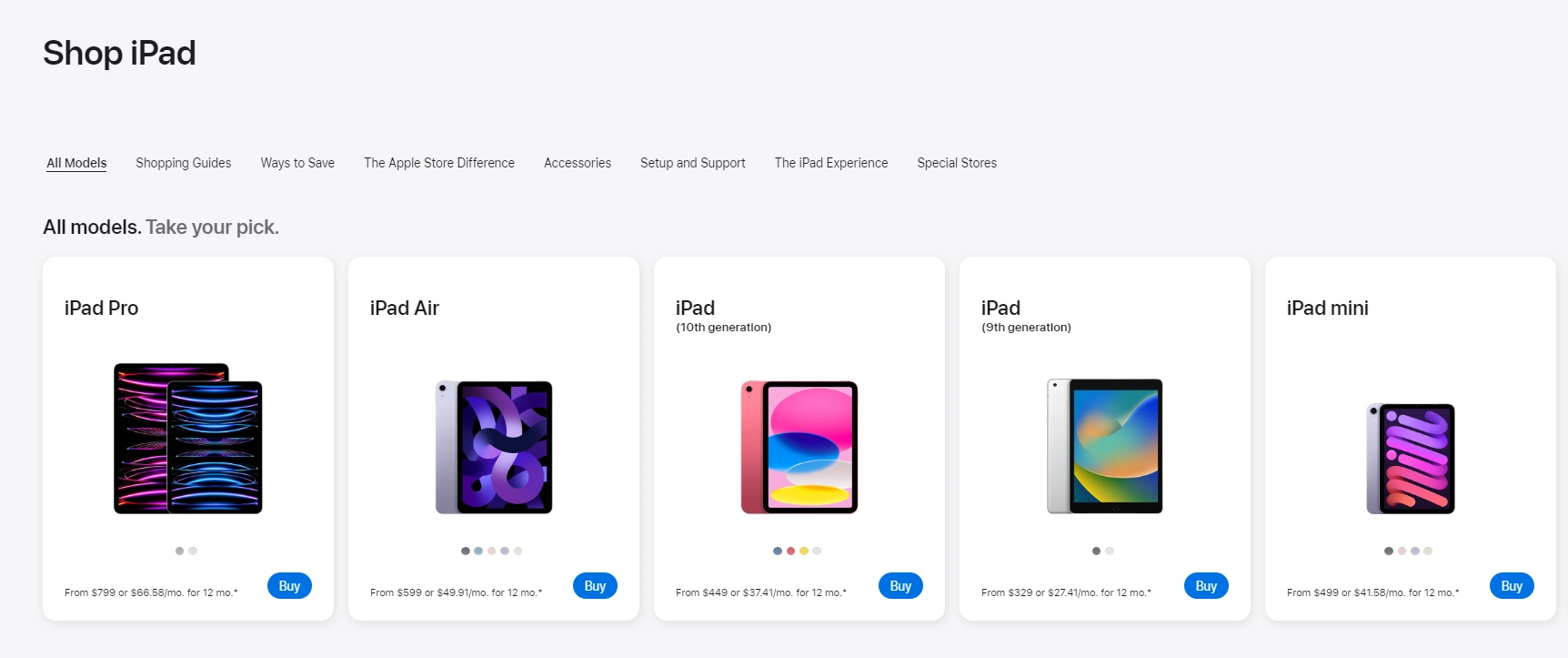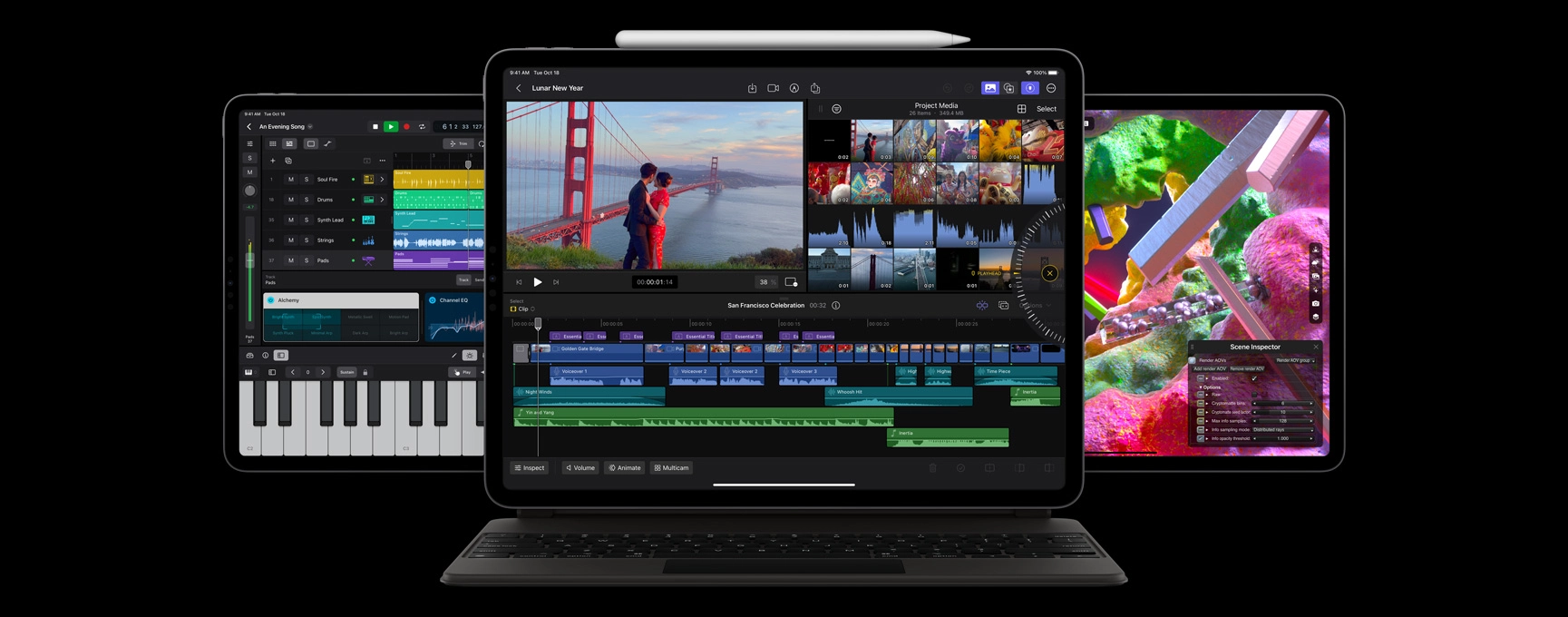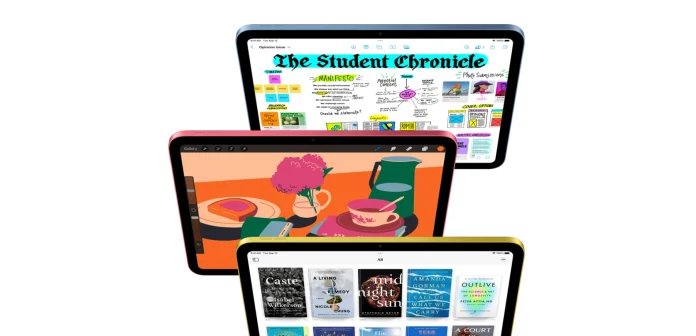When I say the iPad lineup is confusing. I’m usually not believed. There are usually two types of people: those who are good at technology, such as my coworkers. They tell me, “Hey, it’s well known, nothing complicated,” and those who don’t follow the iPad lineup very closely. The latter usually tells me, “Hey, there’s only the iPad. Right? And then there’s the mini and the big one.”
And they’re all astoundingly wrong. Because there are so many iPads, it’s overwhelming. It’s a fantastic thing that knocks many people out of the loop. Because let’s be honest. We’re used to Apple, no matter how one feels about the company, having one advantage over its competitors: its simple product lineup.
You have a regular iPhone, and you have the Pro. There’s the new iPhone and “last year’s” iPhone. You have the soon-to-be-released Vision Pro. And then there are the Macs, where things are slightly more confusing. But it’s clear to everybody.
And the iPad was supposed to be one of the most straightforward categories for Apple. It’s simple, at least it used to be.
Now, the problem is that Apple is confused about its tablets—and confused customers.

The iPad lineup used to be simpler, but then Apple started following the marketing approach it had always avoided (and part of what made it so successful was breaking the marketing rules) – trying to break up the product lineup to give everyone the “best product.” This approach is used by dozens of companies, offering an untold assortment of devices, each with its own “target audience.”
This approach has drawbacks: creating many offerings creates another step in the buying process. I’ll tell a personal story. Recently, my daughter wanted to buy an iPad. She didn’t have a tablet, but she needed it to watch movies. I second that: it’s better to watch on a big screen than on the small screen of an iPhone. “Okay, pick an iPad,” I said, “Let’s go out and buy one.”
“Which one should I pick?” this question took me aback because I didn’t know what to answer. “Pick the iPad Pro,” I said. My daughter countered that it’s the most expensive one, and she still needs it to watch movies occasionally. So we spent about an hour discussing which iPad was the best choice.
It’s a telling situation. This is the “extra step,” and you have to go through it if you have a lot of models that don’t differ much from each other.
The mess is hurting iPad sales
We now have a choice of five models. iPad Pro, a flagship tablet with an advanced camera. iPad Air is virtually no different from the iPad Pro. The iPad 10th Gen is almost identical to the iPad Air and has a similar design. As well as the outdated iPad 9th Gen with a rarified home button and the iPad mini, for those who like something smaller.
The problem is, I’m sitting here rewriting what I wrote above for the tenth time. Because I can’t summarize how they differ, we will find the differences if we dig into the technical specifications. But for most users, they are not significant. But the difference is in the price: the iPad Pro is $200 more expensive than the iPad Air, which is $150 more expensive than the iPad 10th Gen, which is $120 more expensive than the iPad 9th Gen.

I’m sorry; I know this is tedious to read. But this is the reality that anyone who wants to buy a new iPad finds themselves in. Yes, the iPad Pro has narrower bezels around the display and is the thinnest iPad ever. Also, the iPad Pro supports USB4 and data transfer speeds of up to 40Gbps. But these are all details that are very insignificant to a potential buyer.
However, if you want a new iPad, you might get confused. And that’s not the effect Apple wanted.
And it’s taking a toll on iPad sales. Many consumers choose the cheaper model without realizing the benefits of the iPad Pro or iPad Air (although I don’t deny that some will choose the more expensive model).
There is still a large category of users who might make an impulse purchase. But when faced with the agony of choice, they refuse to buy.
What will change?
Apple is now working on trying to change the lineup. For example, the iPad Pro will get an OLED display, an M3 chip, and an updated design.
The iPad Air will get a 12.9-inch version to complement the 10.9-inch model and the M2 processor.
The iPad 10th Gen, which just recently received an update, will be on sale before being replaced by the iPad 11th Gen. When it is introduced, the iPad 9th Gen will also go out of stock, so you will no longer have the option to buy an iPad with a home button. The old stylus will also be a thing of the past, so there will be less confusion about the stylus.
The problem is that it won’t change things in any way. And the iPad lineup will be just as confusing. Apple doesn’t want to give up the regular iPad because it’s the company’s best educational offering. If this tablet is removed from the market, the company will lose to the Chromebook competition.
I wish Apple would remove all iPads except the Pro and Air. It would make the lineup much more understandable. But the company sees the risks in that, so it will continue to release at least three different iPads, trying to diversify in terms of additional features (new Magic Keyboard for iPad Pro OLED), performance, and pricing.
As far as I can tell, the future of the iPad mini remains unknown, and the company isn’t sure if it’s worth releasing. Its sales have been growing recently, from about 6% in 2022 to about 13% at the end of 2023, so we’ll likely see a new iPad mini in the fall of 2024.
Another challenge the company faces is bringing accessories to a common denominator. Currently, the cheapest Apple Pencil doesn’t work with the cheapest iPad. And the company has both Lightning and USB-C models. It will take at least one more year before Apple can connect the entire lineup to USB-C.
But the innovations also do not promise us certainty, for example, the new Magic Keyboard, which is expected to be introduced with the iPad Pro in March 2024 will not work with the iPad Air.
So it will still take Apple a long time to find a balance in the iPad lineup.






